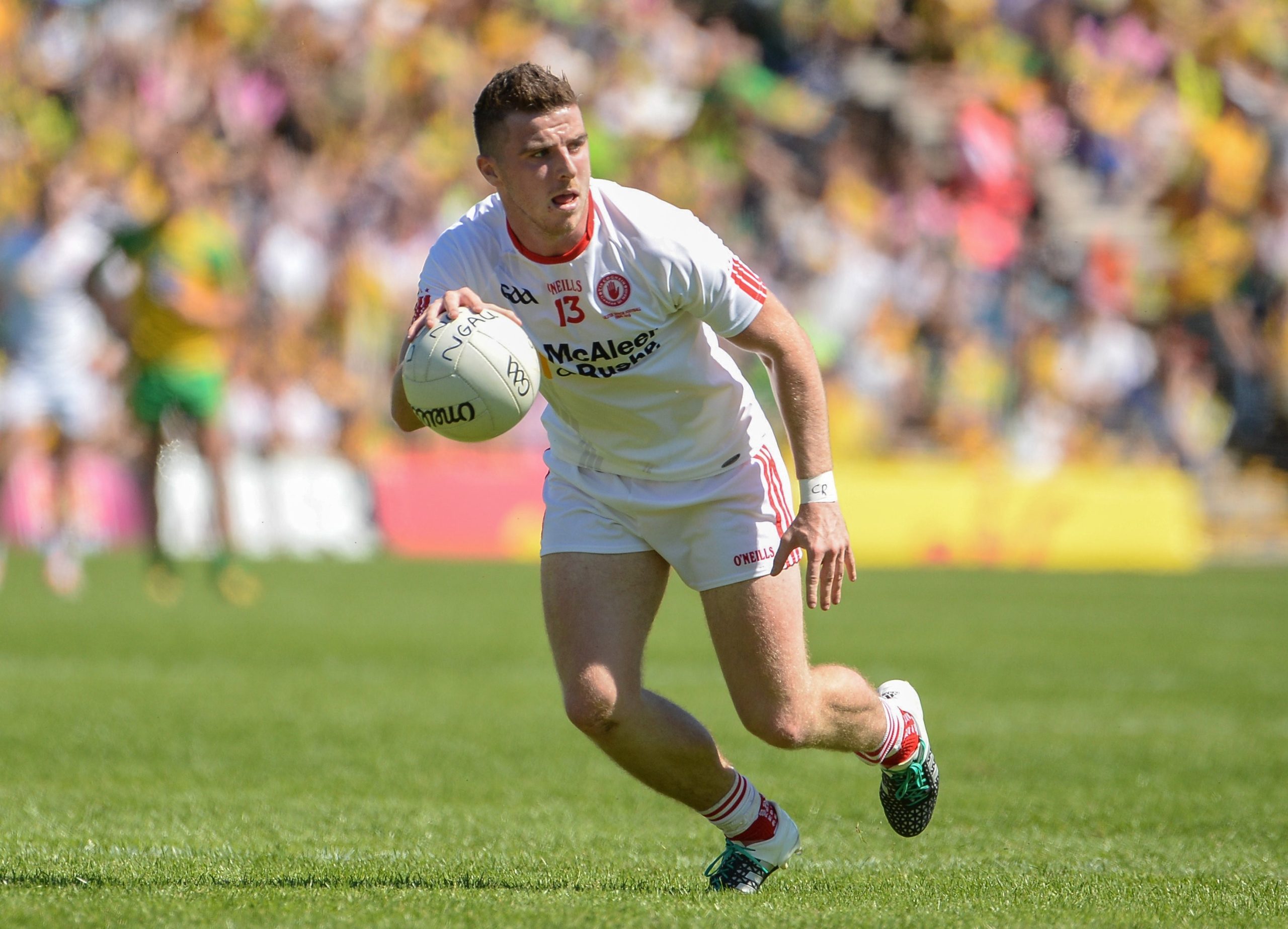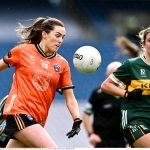The curse of the ACL has struck again in recent weeks and we touch base with Connor McAliskey and Chris Kerr about their personal experience of the dreaded injury:
By Shaun Casey
IN the last few weeks, a number of high-profile intercounty players have fallen foul to the curse of the cruciate. Armagh’s Aimee Mackin was the latest addition to the growing list, along with Down’s Barry O’Hagan, Cavan’s Paddy Lynch and Paudi McGrogan of Derry.
Mayo’s attacking wing-back and captain Paddy Durcan is another who will be out on the rest of the season while Tipperary hurling skipper Seamus Kennedy and Dublin shot-stopper Evan Comerford have suffered the same fate.
Those names are by no means part of an exclusive list as ACL (Anterior Cruciate Ligament) injuries are rife throughout Gaelic Games, at both club and county level, and have been for the past number of years.
Bernard Brogan, Colm Cooper, Ethan Rafferty and Henry Shefflin are other big names that have suffered the dreaded cruciate injury, while Mackin and O’Hagan have picked up the same injury once again, on the same knee.
What has caused the upsurge in ACL tears? Is it the condensed season, the bad weather, the training load compared to games? It’s probably a cocktail of lots of different things, but Chris Kerr puts a lot of it down to bad luck.
Kerr knows a thing or two about cruciate injuries. The former Antrim goalkeeper tore his ACL at 33 years of age and a short while after coming back to play at club level, he damaged the same knee again.
“I was part of a talk panel one night with Chris Connolly, the surgeon, and Gavin McLean from Belfast Knee Clinic and they were just listing such a long list of things that could happen,” recalls the St Gall’s clubman.
“It can be genetics, even down to the holes in your tibia and your femur, if they’re too wide or too narrow, it can have an impact. There’s previous injuries, the mechanics of running, just bad luck as well.
“Personally I’d done mine twice wearing firm-ground boots. I’ve changed to just metal studs all-year round since then and it’s been okay, but maybe that’s my imagination. The games have got quicker, both football and hurling.
“But on the flipside, players are doing more strength and conditioning and weight training to strengthen the knee so it’s a hard one. Look at Sean Finn, who plays for the Limerick hurlers, he’s probably one of the best shapes of a GAA player I’ve ever seen, and he still did his ACL.
“So I think a lot of it’s down to bad luck too. People are getting quicker and faster and you’re having to change direction that wee bit quicker.
“Think of your journey growing up as a Gaelic player, you’re never really taught about how to change direction at high pace until you’re a senior. Then you have people trying to coach the backdoor cuts or cutting off the sideline.
“By that stage people are already fixed in their own wee movement patterns whereas in rugby they’re taught all this from juvenile up. You could list off 20 reasons why it’s happening, it’s just down to luck as well.”
Connor McAliskey was a little different. While most ACLs are non-contact injuries, McAliskey tore his in a collision with a Cavan defender in the opening round of the McKenna Cup back in January 2017.
The Clonoe clubman had rattled over five points before being stretchered off the field at Kingspan Breffni as the Red Hands lost out by four in the end, but bounced back to win the competition, completing six-in-a-row of pre-season titles.
While McAliskey’s knock may have been slightly out of kilter with the rest, he puts a lot of the injuries down to the strength and conditioning work being done across the board, compared to decades ago.
“I went for the ball and a boy came in and his shoulder actually went through outside of my knee,” recalled McAliskey. “I tore the MCL off the bone and done my cruciate at the same time, so mine was probably not the usual instance of it happening.
“Everyone’s so big and powerful now, everyone’s trying to put so much power through the turn and I don’t know if the legs are managing it.
“You’re trying to do all of that plus training maybe three or four times a week, and then as you fatigue the glutes and hamstrings, it possibly leads to a wee bit of weakness.
“If you look at Gaelic footballers now compared to Gaelic footballers 20 or 30 years ago, they’re poles apart in terms of their physique, their strength and conditioning, the power that they’re able to generate through the top-end speed and then there’s the deceleration aspect.
“They’re not jogging, not that they were back then, but everybody’s just so athletic now and I think that it’s always going to lead to injuries when you’re putting that much demand on the body.”
The rehab can be a slow and tedious process physically, but mentally is where the real challenge comes from. The doubts that creep into your head, the fear of redoing the same injury again, losing out on the sport you grow up dreaming to play.
It certainly isn’t a straightforward route, and both Kerr and McAliskey found the comeback mentally challenging.
“I actually stayed involved with the Tyrone team that whole year,” explained McAliskey.
“Louis O’Connor was the Tyrone physio, and he was saw me on Mondays in his house and then I was going up to the Tyrone training throughout the week and Louie or Michael Harte were there.
“I was actually getting one-on-one physio three or four times a week. After the first few months it was more of a mental battle because you go from being out of the house four or five times a week to basically being stuck in the house 24/7.
“That was the bit that really hit me, having to depend on everybody else to basically help you for the first three or four weeks when you’re fully cast. I found that mentally tough and then physically it was difficult too.”
He continued: “But I was so lucky that Michael and Louie were helping me and then I got to the stage that I started getting a wee bit of confidence and to be honest, whatever they said, I was willing to go and do it.
“I got back on the pitch, and I was back running again. I think I played eight and a half months later for Clonoe in a league game against Trillick. I actually played a friendly just before I played in the league, so it was probably about eight months when I came back.”
Like McAliskey, Kerr had the assistance of a physio he trusted and that was a huge help. He took up residence in Focus Gym, Augher with Helen McKeever after his second ACL surgery and began to work on the comeback.
“I remember before I’d done it the first time I heard about different people who had done their cruciate, you’re always just thinking is it really that bad?” added Kerr. “You hear the timescales of nine or ten months but anytime I’d seen someone doing it, it didn’t look that bad.
“The first time I did my ACL, after the initial disappointment I was buzzing to do the rehab and left no stone unturned to get back. The second time it happened, I just slipped in training and I knew right away that it had happened again.
“I’d done mine at 33 and 34 so the second time I wasn’t intending on going back playing. Then I changed my physio and went to see Helen (McElroy) the second time and it was just a breath of fresh air.
“The rehab and strength scores were all going in the right direction, and I followed everything down to a T. I was going to her rehab classes on a Monday and then slowly but surely, I was trying to kick a ball and one thing leads to another and you’re back at it again.
“But it’s the mental drain of it all. I think when you get to about five or six months in. it’s very hard to keep going. You sort of just turn a corner and the games we play are just so addictive and you don’t want to miss out and you want to get back.”
He continued: “There’s always a road back. At the time, it’s grim but I think if you commit to the rehab and get over the initial disappointment then there’s a great chance to try and come back stronger or to work on stuff that you could never have done during the season.
“You can maybe do things in your life that football doesn’t allow at times – have a bit of a social life, go to events, go on holidays, and a wee bit of mental freshness isn’t the worst thing either.”
A knock in training, just coming back into the game, can help too as McAliskey explains.
Once you take a couple of bangs and realise your body is fit to hold up to it once again, then that can be a massive relief.
“I was kicking the ball, doing fist-pass drills, kick-pass drills, shooting drills but I wasn’t in contact. We were doing a wee three-man weave and a shot at the end and there’s someone meant to come and put a bit of pressure on you.
“It was token pressure, they don’t really go in on the tackle. As I went to shoot with my right foot, Sean Cavanagh actually came in and to be fair to him, he hardly touched me, it was sort of like a more of a wee dunt.
“I took the shot as I was leaning on one leg and fell. Sean sort of looking at me as if to say he didn’t realise it was me, but I got up and bounced up straight away and to be honest because my injury was due to contact, that’s what I sort of needed.
“Sean didn’t go in fully, but he didn’t realise it was me and I wasn’t expecting to get hit. I didn’t get hurt again and knew I’d the work done. I experienced that first hit and then I felt like it was better for me.”
Both men returned to action after their respective injuries. Kerr has played club championship in Armagh with Ballymacnab and has since returned to his home club St Gall’s and is still guarding the goals for them. He even returned to the Antrim panel for a short spell.
McAliskey lined out for Tyrone in the 2018 All-Ireland final, scoring 0-3 as they lost out to Dublin, and is still shooting the lights out for Clonoe at club level.
While it’s slow and painful, McAliskey and Kerr have both shown there is a way back.
Receive quality journalism wherever you are, on any device. Keep up to date from the comfort of your own home with a digital subscription.
Any time | Any place | Anywhere













